
Mountain Slopes – Yukon Wildlife Preserve

Mountain goats on their cliff habitat at Yukon Wildlife Preserve
Some creatures have evolved to live on the rock faces of mountainsides, while others are better equipped to live in the valleys often near rivers and other water bodies. Some other species can live easily on all land types, like the Caribou that often travel great distances over all types of terrain along their migration paths.
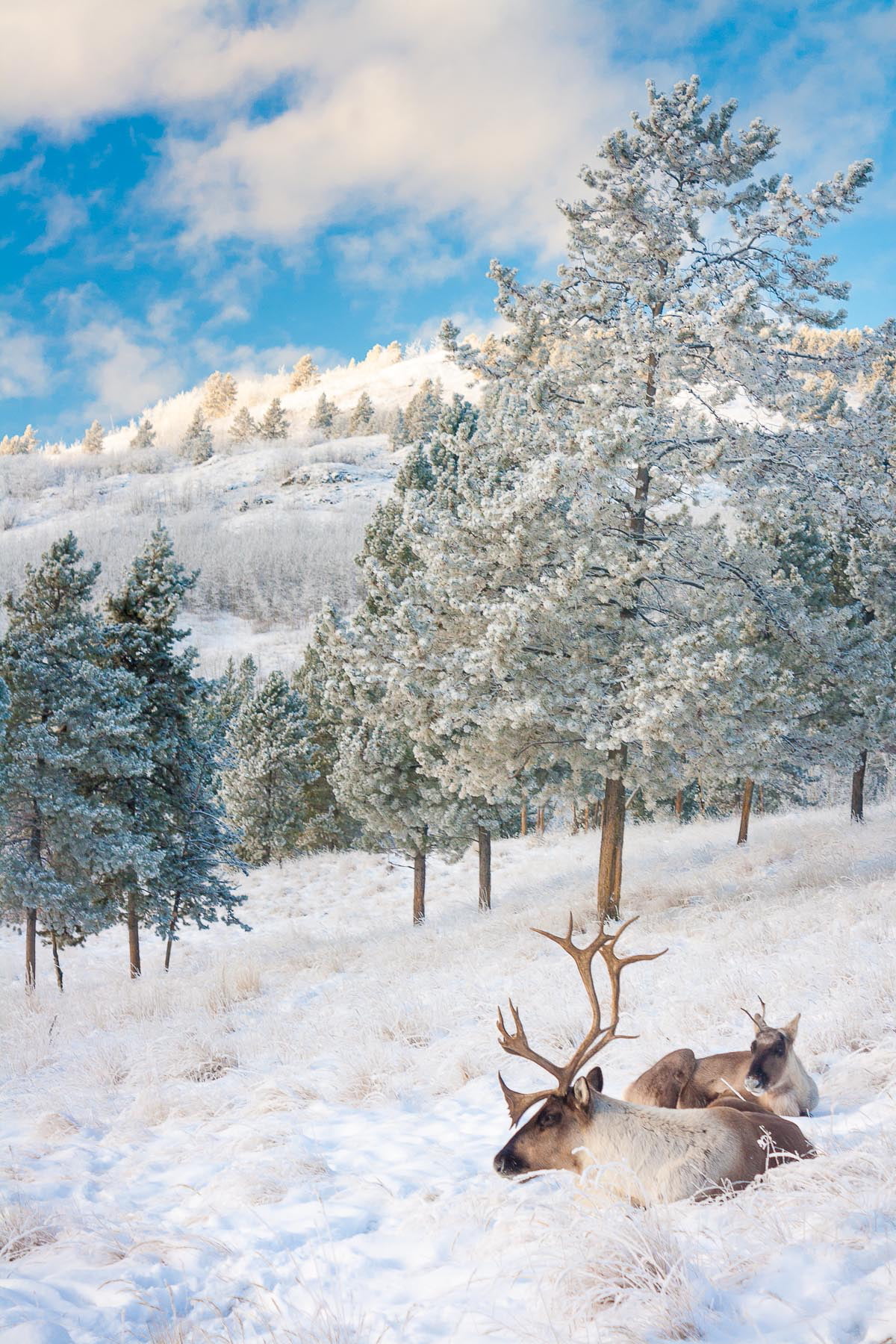
Caribou often travel great distances over all types of terrain along their migration paths.
The land all around us is in a continual state of change as it has been since time began. The Preserve is located within the Takhini River Valley. The river is south of us, only a few hundred meters away. Glaciers filled this valley up until about thirteen thousand years ago. While they were here, the glaciers altered the landform in some very dramatic ways as they bulldozed great areas of soil and rock, gravel and forested areas resulting in what we can see today. Look at the mountain tops across the valley and you’ll see the smooth rounded tops where the glaciers ground them down; and the other mountains with jagged and pointed tops indicating where the glaciers did not have a similar impact because they did not grow that high. However erosion is still at work as the influences of wind, rain, ice and snow continue to alter the landscape.
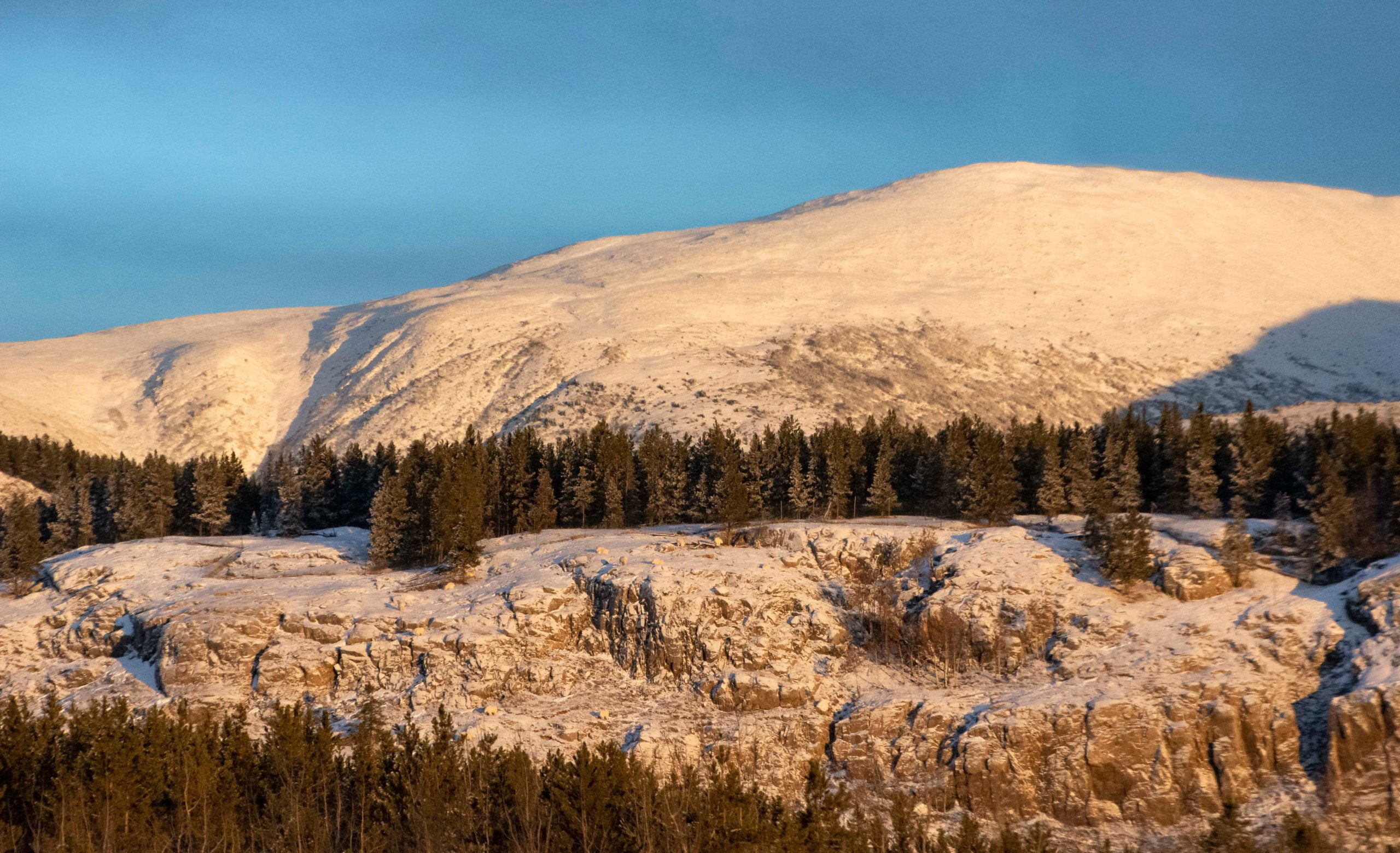
This type of landform provides a spectrum of variables that influence the safety, nourishment, and rearing of offspring that many species have adapted to over thousands of their generations.
Going back millions of years, many species evolved due to the influences of what they prefer to eat and where that food source could be easily found throughout the year. For example, beavers depend on wooded vegetation and while trees grow on mountain slopes, beavers had greater opportunity and benefit to feed on the vegetation that grows next to waterways, so beavers evolved to be more adept at swimming and thriving in an aquatic environment that also sustains certain species of trees that beavers adapted to thrive on.
Mountain Goats and Sheep are the megafauna species featured in the rocky habitats here on the Preserve, They evolved specialized hooves and muscle groups to allow them to move quickly, and safely, on the various rock types found on these slopes.

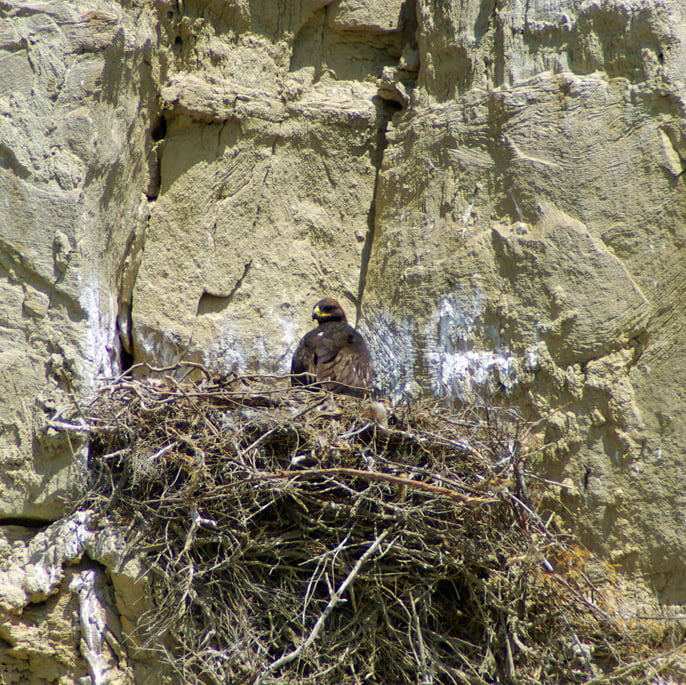
Golden eagle nest on Lake Lebarge’s eastern shores early 2000’s. Photo D. Caldwell
Also not present on the Preserve, are other creatures like Marmots and Pikas that typically make their homes high up in the rocks and mountains of the Yukon, Some species seem to be very widespread and can be found in a variety of Yukon habitat types. While some others are localised to specific geographic locations or elevations where they have the greatest opportunity for success. The ubiquitous Arctic Ground Squirrel also favours mountain sides to make a home.
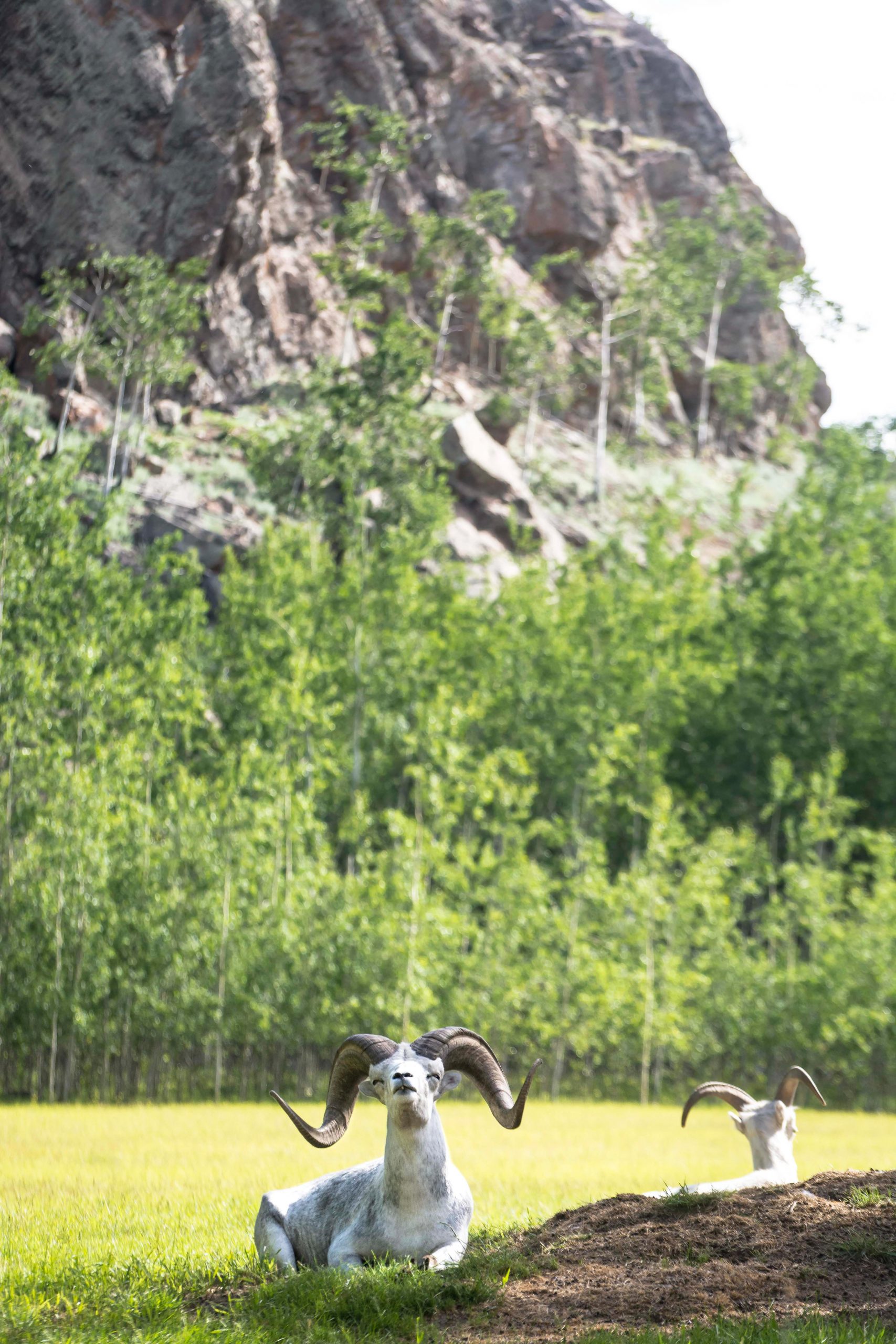
Thinhorn Sheep rams enjoy sunshine in their predator-free grazing grounds at Yukon Wildlife Preserve. In the background we see the sheep-accessible cliffs within their habitat.
Rocky habitats are not without their dangers. During the winter season ice will form in small cracks and crevices within the rocks, as the ice becomes colder and swells it further fractures the rock sometimes making it dangerous in that it may break away completely and fall further down the slope.
Gravel screes are the deposits of smaller rocks, pebbles and dirt that have fallen from above and form a skirt of loose materials at the base of a rock face. These can be difficult for mammals to walk on quietly and safely and as such provide another level of security for the creatures that dwell on the mountainsides. Flash floods caused by voluminous rainfall and spring snowmelt can also be dangerous for the creatures that live on the rocks.
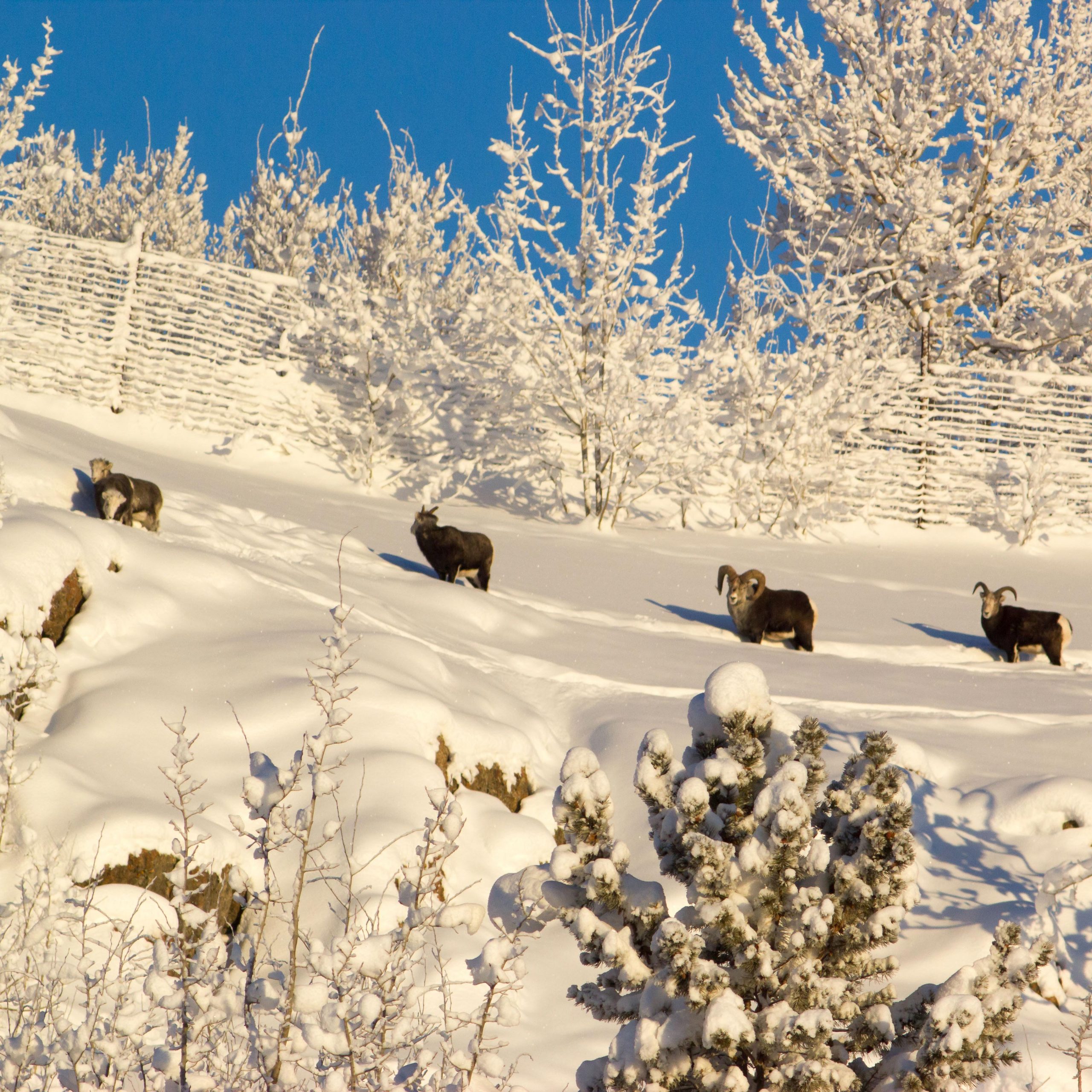
Rocky habitats are not without their dangers, which change based on the season. Here, Thinhorn Mountain Sheep walk through deep snow along the cliff edge at Yukon Wildlife Preserve.
Because rocks warm in the sun and hold that warmth after the sun sets, some rock faces are preferred by early arriving bird species, like raptors, that will nest there to get started on raising the offspring that may hatch while snow still lies on the ground. Raptor parents teach the offspring how and where to hunt after they have learned to fly. They have lots to do within a short seasonal weather pattern, so nesting in the warmth of the rock faces provides them with an advantage to raising a healthy next generation.
The spring thaw also introduces new dangers as the warming rocks may cause the ice to melt from beneath, creating loose patches that can break away when a foot is placed on them. Meltwater cascading down the slope is another seasonal hazard the creatures are well conditioned to avoid. Staying warm and dry is its own reward when the chill winds blow high up on the rocks.
As the ice and snow melt away and the winter white gives way to the browns and greens of spring and the migratory populations return for another summer in the Yukon, the many animals species return to raise their families and prepare them for a life that continues to transform and evolve due to climate change and the other forces of nature like earthquakes, wildfires, floods and the influences of mankind.
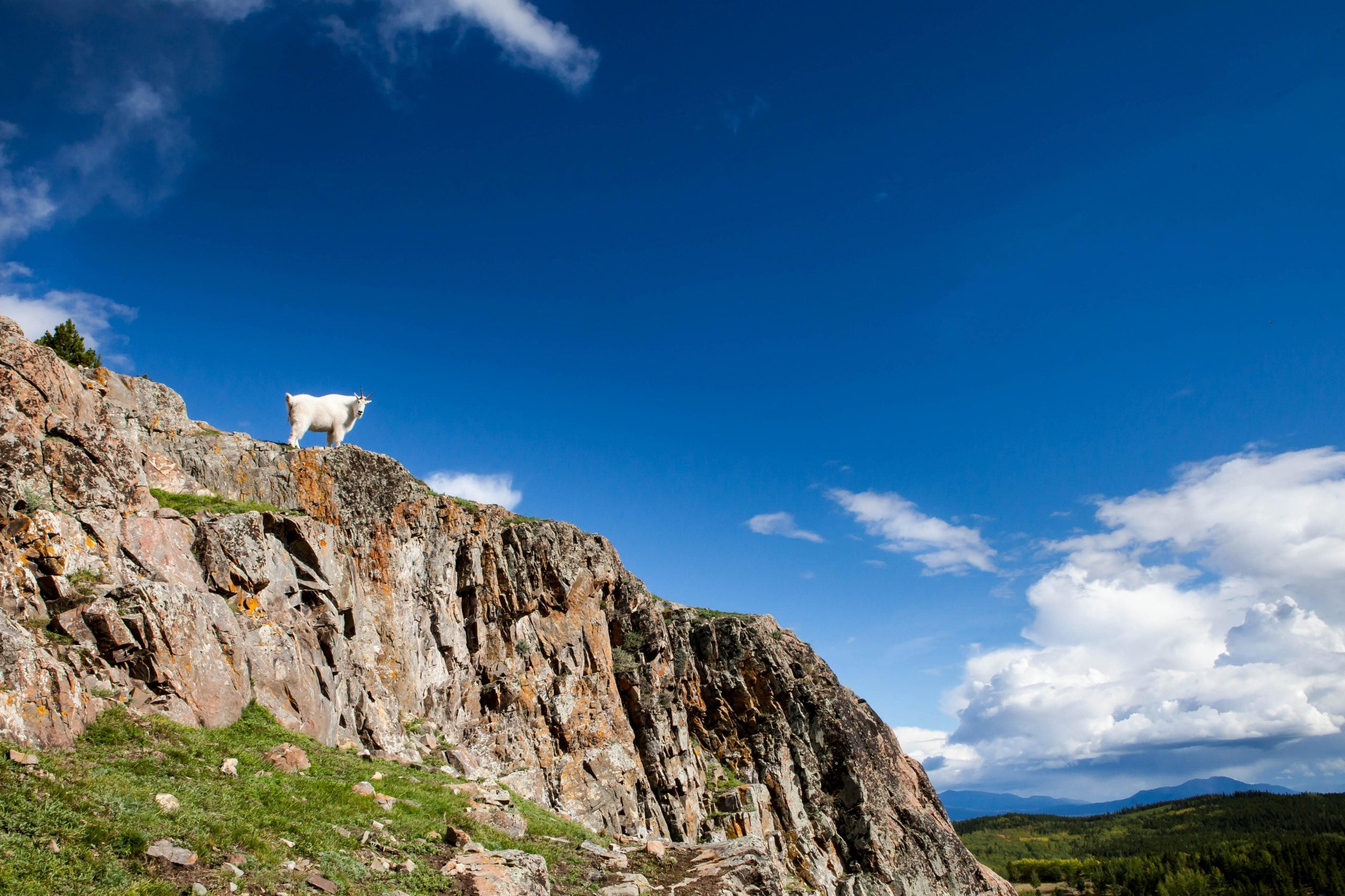
It may appear that some animal species are well established and very set in their ways, however they are evolving each day to maximize new opportunities provided by an ever-changing planet and the relationships between their habitats and their ability to get what they need to survive. We humans may not notice these changes right away as they can be quite subtle and appear meaningless to us. An example of this is the recent addition of crows and hummingbirds to the Yukon. They are expanding their summer ranges north as the climate warms and they can find enough nectar producing flowers to sustain them as they explore new habitats in the north. The flowering plants they depend on are also moving further north and their presence here will result in other changes that may take us some time to see and understand as they move into habitats presently occupied by the traditional species we normally focus on. Change is all around us, but it can be difficult to see clearly or understand the scope of these changes.
So take the time to look beyond the megafauna and other species we consider to be normal, you may see something astounding. Just ask Whitehorse bird enthusiast Cameron Eckert who found and photographed an adult female Calliope Hummingbird, on Herschel Island in June of 2017, 1,800 km north of its traditional breeding range.

Doug Caldwell
Wildlife Interpreter
Doug is one of the Interpretive Wildlife Guides here at the Preserve. An avid angler and hunter he has a broad knowledge of Yukon’s wilderness and the creatures that live here. With a focus on the young visitors to the Preserve, Doug takes the extra time to help our guests to better appreciate the many wonders of the animal kingdom here in the Yukon.

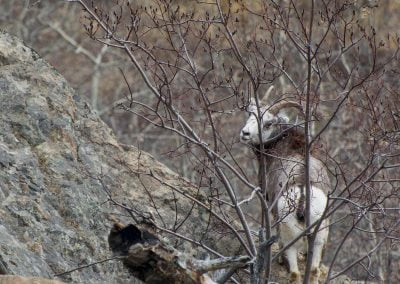
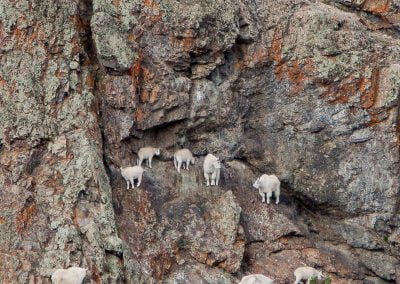
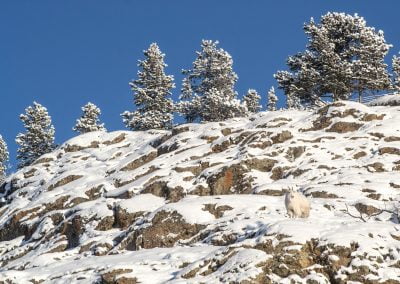
0 Comments